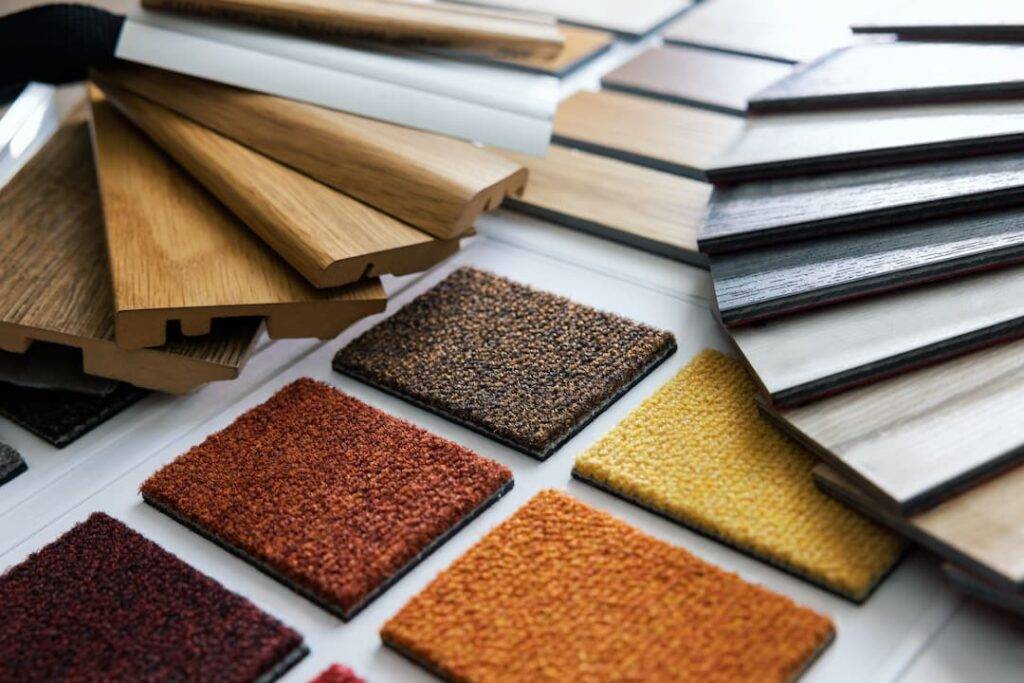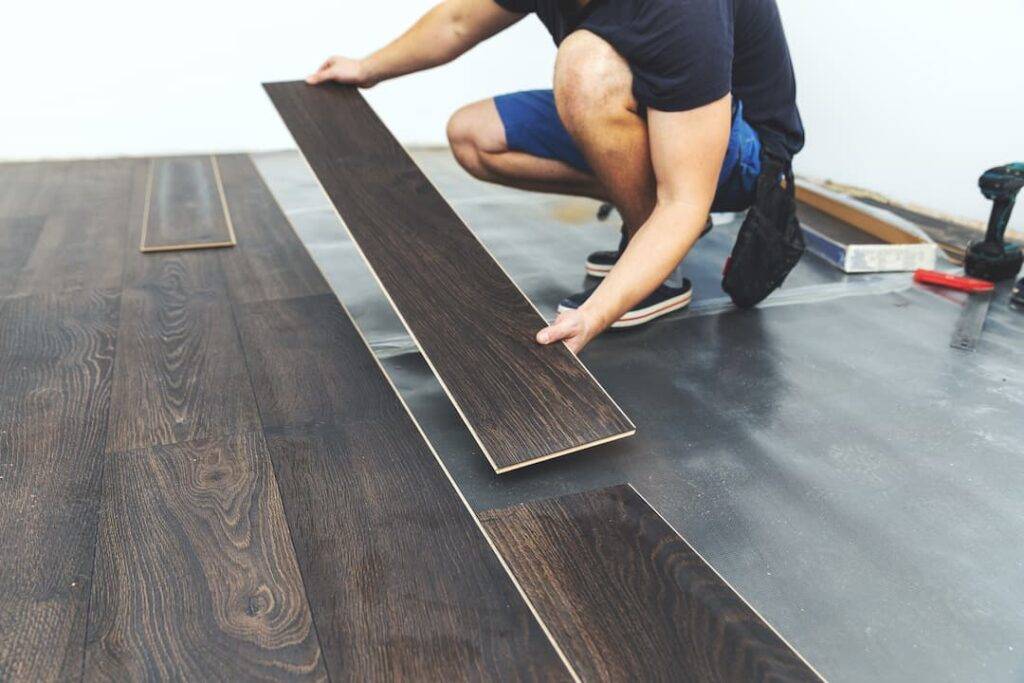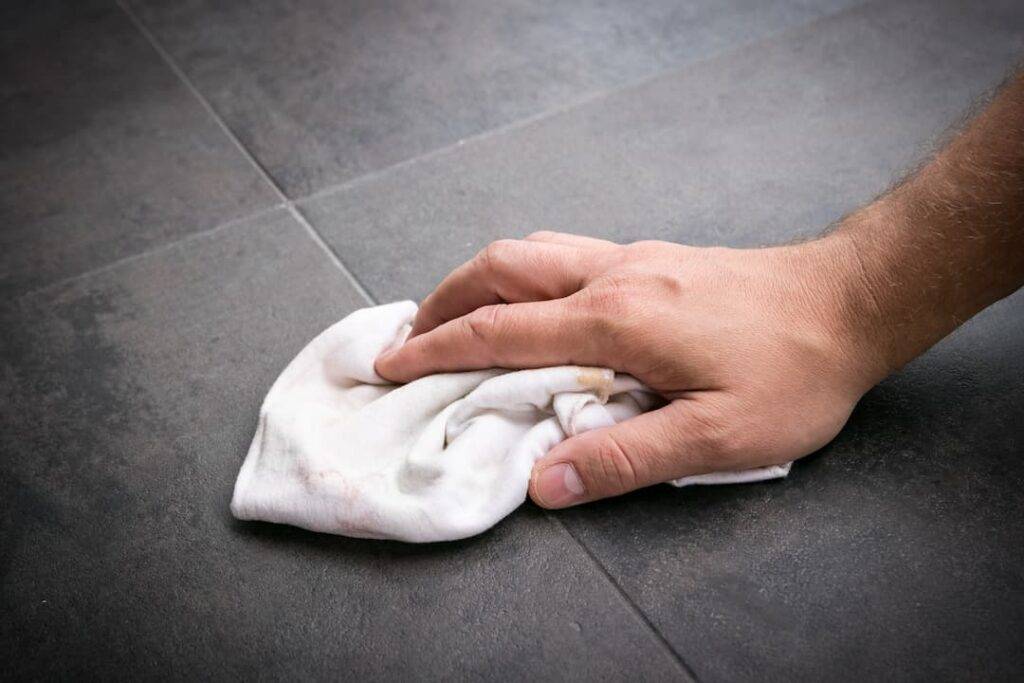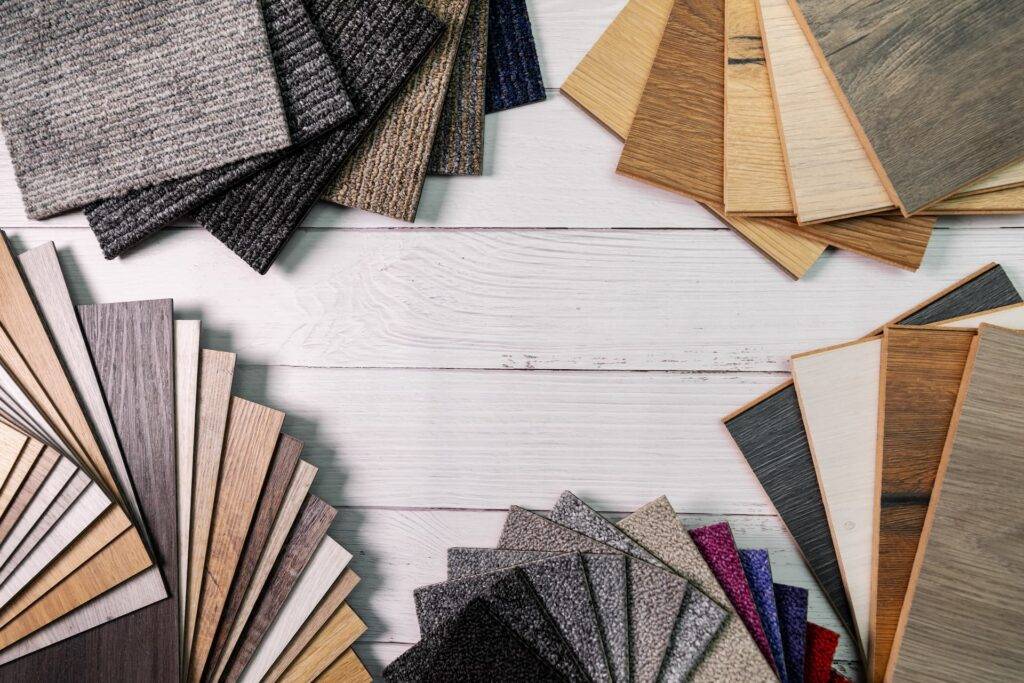Choosing the right flooring materials for your home can be a challenging task. With so many options available, it’s important to understand the benefits and features of different materials. In this guide, we’ll explore three popular flooring choices—carpet flooring, laminate flooring, and vinyl flooring—and provide helpful tips to make the best decision for your needs.
The History Of Flooring Materials
Flooring, and particularly carpet, has come a long way over the years, evolving to meet changing tastes and requirements. You may be wondering how long carpet has been around for. Carpet flooring dates back thousands of years, with early examples found in ancient civilisations. Initially woven by hand, carpets became more accessible with the invention of machines during the Industrial Revolution.
Vinyl flooring emerged in the 20th century as a practical and affordable alternative to hardwood and tile. Its water-resistant properties quickly made it a favourite for kitchens and bathrooms. Laminate flooring, introduced in the 1970s, became popular for its ability to mimic the look of wood at a fraction of the cost. It gained popularity due to its durability and ease of installation.
Benefits Of Different Flooring Materials
Benefits Of Carpet Flooring
Carpet flooring offers a range of advantages, starting with comfort. Its soft surface makes it pleasant to walk on, especially in bedrooms and living rooms. Carpet also helps reduce noise, making it a good choice for upstairs rooms or flats. The thick fibres provide insulation, which can help keep your home warm and even lower energy bills.
In terms of safety, carpet flooring is less slippery than hard surfaces, making it a safer option for homes with children or older adults. Regular cleaning can also trap dust and allergens, helping to improve air quality. Finally, carpets come in many colours and styles, allowing you to add character to your space without breaking the bank.
Benefits Of Vinyl Flooring
Vinyl flooring is a practical choice for busy households. But where is vinyl flooring best placed in your home? It’s highly durable and can stand up to heavy foot traffic, making it ideal for hallways and kitchens.

Vinyl is also waterproof, so it’s perfect for bathrooms and areas prone to spills. Its stain-resistant surface is a bonus for families with young children or pets. Another benefit is how easy vinyl is to install and maintain. With just a damp mop, it stays clean and fresh-looking. Vinyl is also a budget-friendly option that offers a wide range of styles, from wood and stone looks to bold patterns. Its shock-absorbing nature makes it comfortable underfoot, which is great for long hours in the kitchen.
Benefits Of Laminate Flooring
Laminate flooring is loved for its durability. It’s resistant to scratches, dents, and fading, making it a good choice for homes with pets or children. Cleaning is straightforward—just a quick sweep or a damp mop is enough to keep it looking great.
Laminate flooring is also one of the easiest types to install, thanks to its click-and-lock design. It’s affordable and comes in a variety of designs, from wood-like finishes to modern textures. Additionally, laminate is suitable for use with underfloor heating, adding an extra layer of comfort to your home.

Choosing Flooring For Different Rooms
Each room in your home has different needs, so it’s important to match the flooring material to the space. For high-traffic areas like kitchens and hallways, vinyl flooring is a smart choice because it’s durable, water-resistant, and easy to clean. Bathrooms also benefit from vinyl’s waterproof nature.
In living rooms and bedrooms, carpet flooring adds warmth and comfort. Its noise-reducing properties are also ideal for creating a peaceful environment. For dining rooms or home offices, laminate flooring is a good option as it’s stylish, easy to clean, and pairs well with furniture. To learn more, read our guide to flooring materials.
Signs You Need New Flooring
It’s not always easy to tell when your flooring needs replacing, but there are some clear signs to look out for. Water damage, such as warping or mould, is a common indicator that it’s time for a change. Similarly, cracks, scratches, or worn patches can make your floors look tired and dated.
Discolouration or unpleasant odours may also signal the need for new flooring, particularly with carpets. If your floor feels noisy or uneven underfoot, it could mean there’s structural damage that needs attention. Even if there’s no physical damage, you might simply want to update the style to suit your tastes.
Cleaning & Maintenance Tips For Flooring Materials
Carpet Flooring
To keep carpet flooring in good shape, vacuum it regularly to remove dust and dirt. For spills, blot the area with a damp cloth and a gentle cleaning solution. Deep cleaning once or twice a year can refresh the fibres and extend the carpet’s life.
Vinyl Flooring
Vinyl flooring is low-maintenance and easy to clean. Sweep or vacuum regularly to prevent dirt from building up, and mop with a damp cloth for deeper cleaning. Avoid using harsh chemicals or abrasive tools, as they can damage the surface.
Laminate Flooring
Caring for laminate flooring involves sweeping or vacuuming to remove dust. Use a damp mop for cleaning but avoid soaking the floor, as excess water can cause swelling. Protective pads under furniture can help prevent scratches, keeping the laminate looking new for longer.
For Quality & Affordable Flooring Materials, Contact Floorium Today

Choosing the right flooring for your home doesn’t have to be complicated. By understanding the history, benefits, and maintenance of carpet flooring, vinyl flooring, and laminate flooring, you can make an informed decision that suits your style, budget, and lifestyle. Whether you’re updating a single room or planning a full renovation, there’s a flooring material out there that’s perfect for your home. For guidance and help when choosing flooring, contact us today. With our wide range of options to choose from, we can help you find the ideal flooring for your home.
